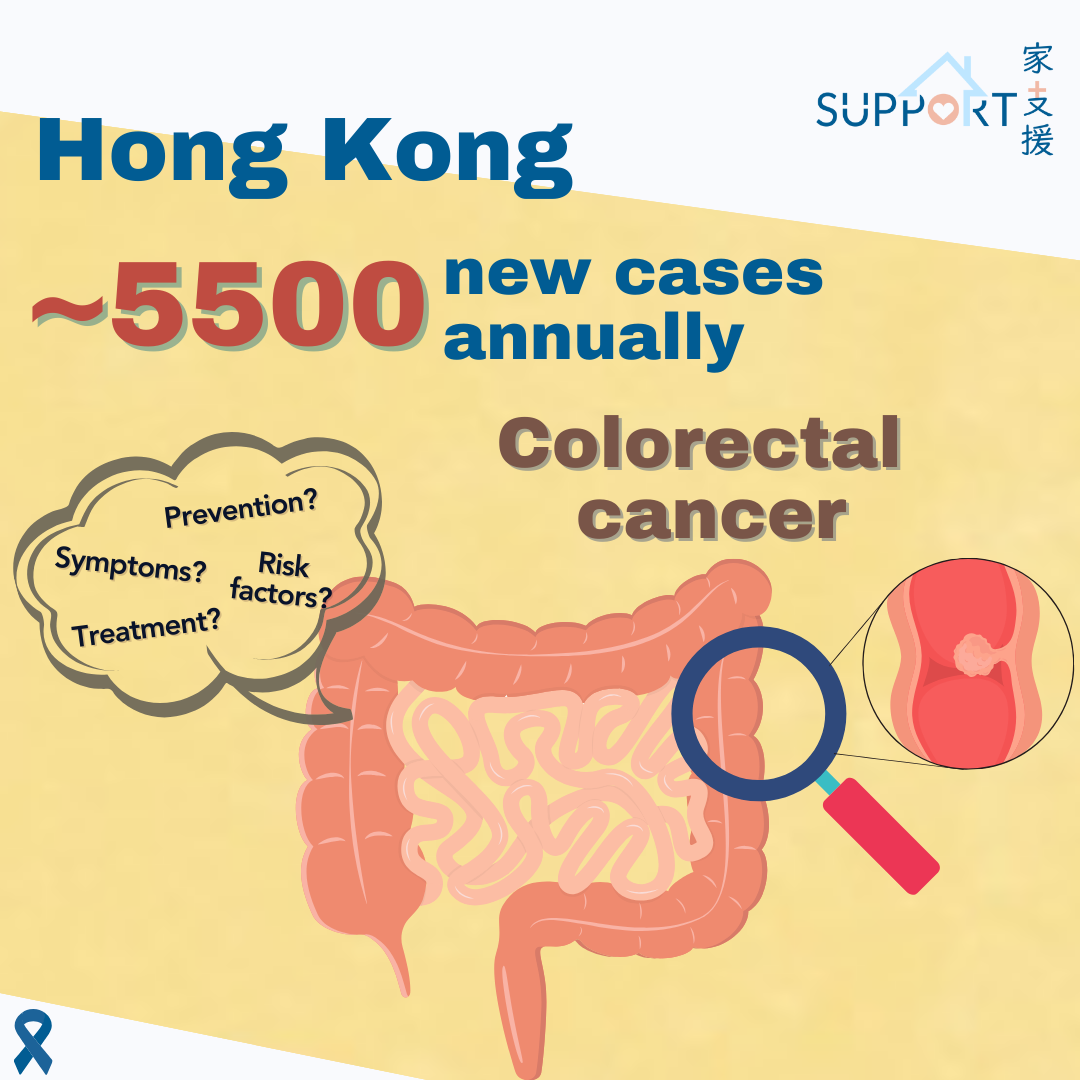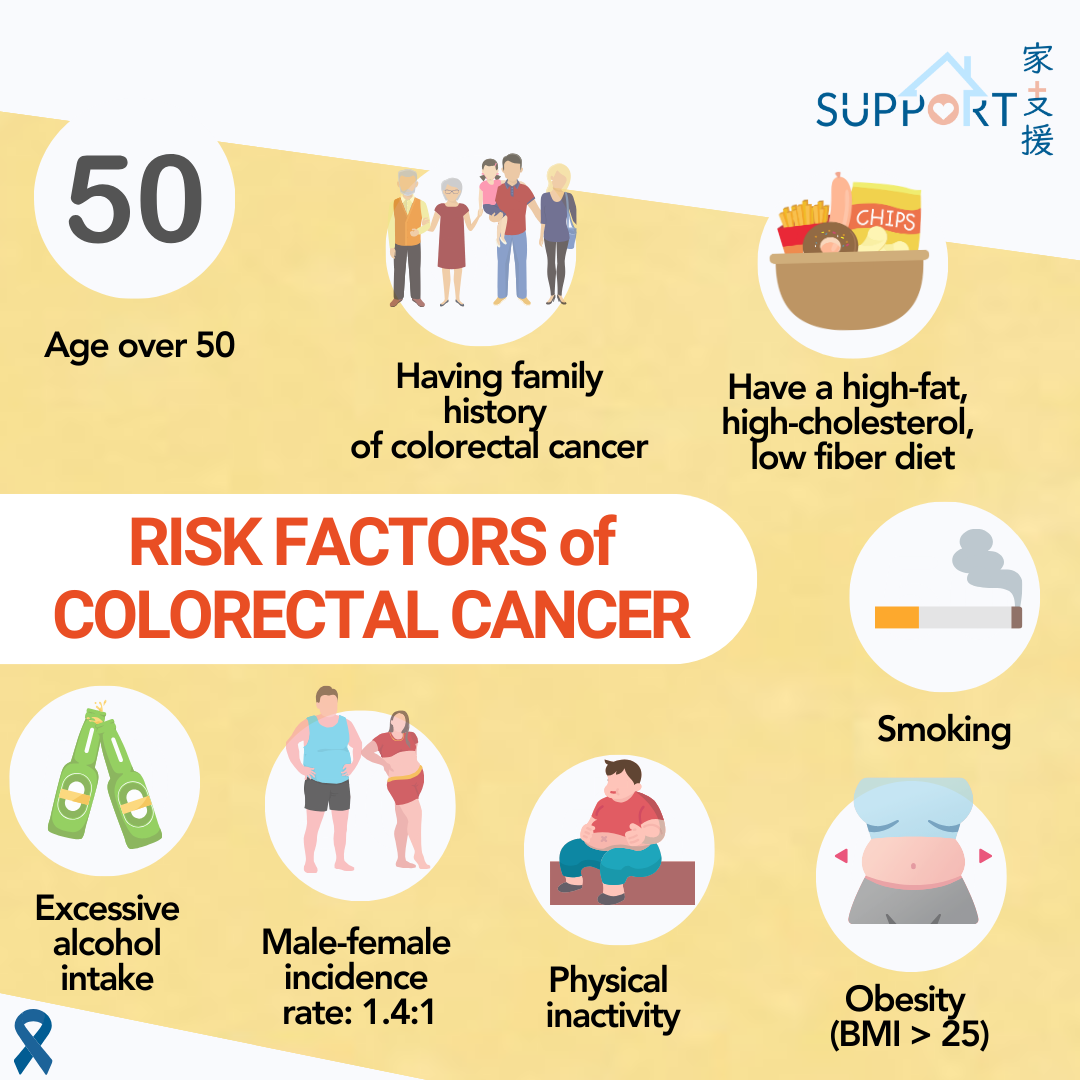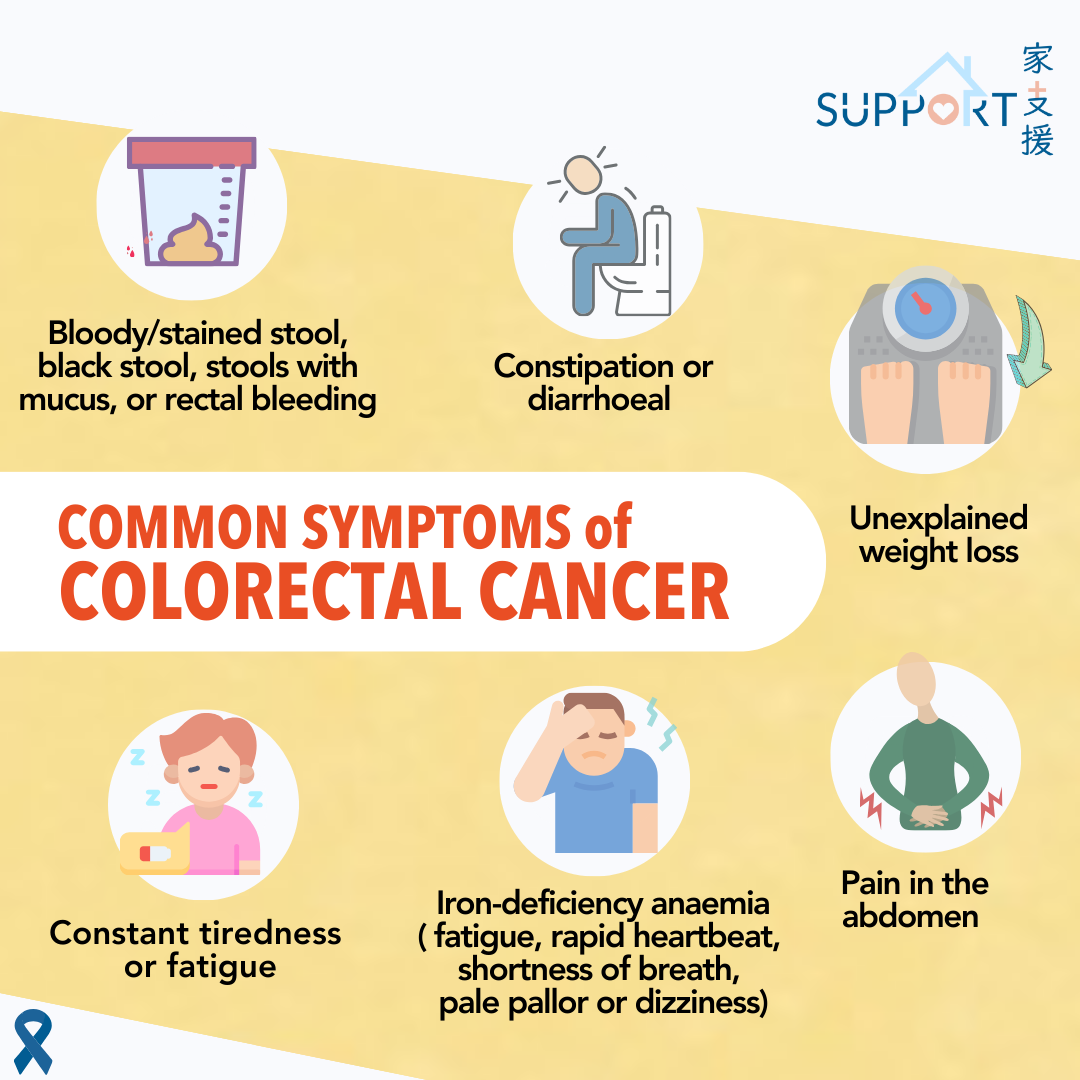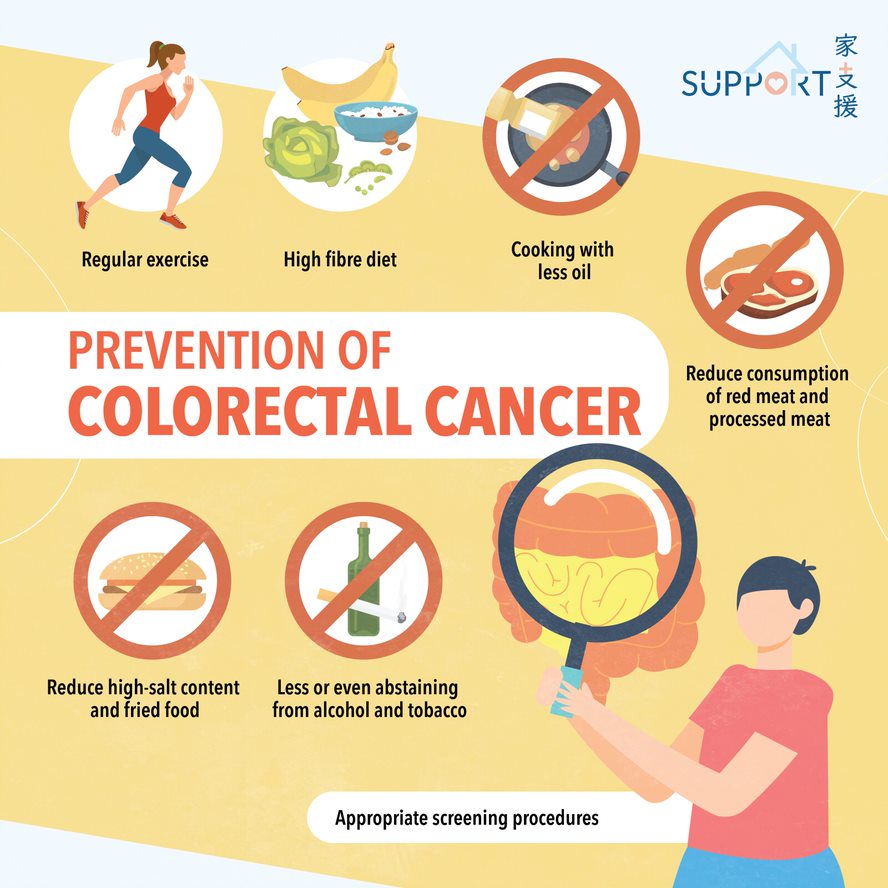Stage I to III diseases are generally regarded as non-metastatic and the treatment is curative in intent. The aim of treatment is to remove all visible diseases in the body completely by surgery with or without other supplementary treatments.
Surgical Treatment
Surgery the most common treatment for colorectal cancer and represents the only curative modality. It is the removal of the tumour and some surrounding healthy tissues during an operation.
Conventional surgery: an incision is made on the abdominal wall under anaesthesia so that the operation is done under direct vision.
Laparoscopic/ robotic surgery: several viewing scopes are passed into the abdomen while a patient is under anaesthesia. The incisions are smaller and the recovery time is often shorter than with conventional surgery.

Figure: laparoscopic surgery
Colostomy: stoma, a surgical opening, is connected to the abdominal surface to provide a pathway for stool to exit the body. The colostomy can be temporary to allow the bowel wound to heal, and it can be permanent when the anal sphincter has to be removed due to cancer involvement. The stoma can be connected to a pouch to collect the faeces.

Figure: Stoma bag
Side effects of surgery: In general, there will be pain and swelling at the site of operation. Bowel habits may also change with diarrhoea or constipation. More severe but uncommon side effects include infection and breakdown of the bowel wound.
Perioperative therapies
Radiation Therapy: Radiation therapy is the use of high-energy x-rays to destroy cancer cells. In non-metastatic disease, it is commonly used in the treatment of rectal cancer before surgery to facilitate complete resection, improve disease control and/or preserve continence. It can be given in short-course for 5 fractions or long course in 25-30 fractions combined with chemotherapy.
Chemoradiotherapy: chemotherapy and radiation therapy can be applied simultaneously before or after surgery. It is usually given in 25-30 daily sessions for rectal cancer that has spread through the muscle wall or has involved surrounding lymph nodes. Studies have demonstrated better efficacy with fewer side effects when chemoradiotherapy is given before surgery.

Figure: Radiotherapy planning for rectal cancer with CT scan
Side effects of radiation therapy: common acute side effects include fatigue, skin reactions, diarrhoea. Uncommon long term side effects include bowel obstruction, bleeding. Sexual problem and infertility can also occur after radiation therapy to the pelvis.
Chemotherapy: drugs that can disintegrate cancer cells by different mechanisms. It can be given intravenously via a tube placed into a vein or orally as a tablet or capsule. A patient may receive 1 drug at a time or a combination of drugs in a certain number of cycles over time. It can be combined with radiation therapy in rectal cancer to improve disease control and facilitate surgery.
Adjuvant chemotherapy refers to chemotherapy given after surgery. Studies have proven its value in stage III disease but data is still evolving in stage II disease. In general, single-agent chemotherapy (5-FU or capecitabine) can be considered in selected patients with stage II disease while combination regimens are offered universally to patients with stage III disease who are fit to receive chemotherapy. The usual duration of adjuvant therapy is 6 months but recent data has suggested 3 months of therapy will produce similar efficacy but fewer toxicities in Stage III patients with lower risk of recurrence (e.g. N1 disease) .
Chemotherapy used in perioperative setting:
- 5-fluorouracil (5-FU)
- Capecitabine
- Oxaliplatin
Combination regimens:
- XELOX/ CAPOX: capecitabine and oxaliplatin
- FOLFOX: 5-FU and oxaliplatin
- Modified FOLFIRINOX: 5-FU, oxaliplatin, irinotecan
Side effects of chemotherapy: Common side effects include fatigue, nausea, vomiting, diarrhoea, mouth sores, neuropathy, skin reaction over palms and soles and increased risk of infection. Hair loss is uncommon for the above regimens in the adjuvant setting.














